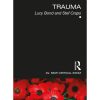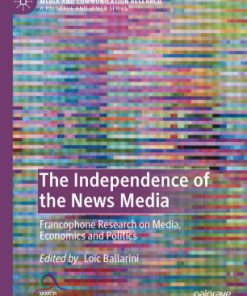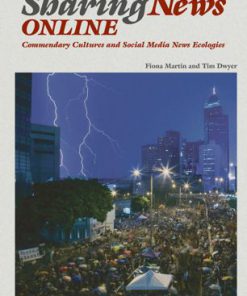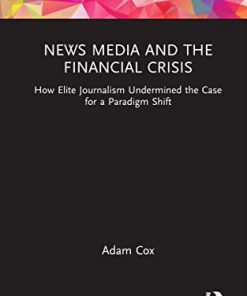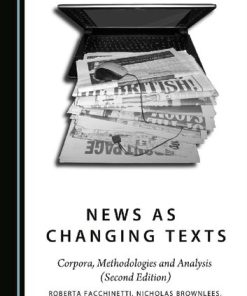Semiotics and Verbal Texts How the News Media Construct a Crisis 1st edition by Jane Gravells 9781137587503 1137587504
$50.00 Original price was: $50.00.$25.00Current price is: $25.00.
Semiotics and Verbal Texts How the News Media Construct a Crisis 1st edition by Jane Gravells – Ebook PDF Instant Download/Delivery: 9781137587503, 1137587504
Full download Semiotics and Verbal Texts How the News Media Construct a Crisis 1st edition after payment
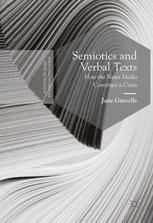
Product details:
• ISBN 10:1137587504
• ISBN 13:9781137587503
• Author:Jane Gravells
Semiotics and Verbal Texts
How the News Media Construct a Crisis
This book offers an innovative approach to analysing written texts, grounded in principles of semiotics. Envisaging whole news media representations as ‘signs’, and using the real-world example of the BP Deepwater Horizon crisis, the author demonstrates how business crises are constructed through language. Gravells identifies patterns of language which show a progression from one kind of ‘current news’ representation to a different kind of coverage. This coverage positions the crisis as having symbolic and conventional meaning within varied social contexts, including the arts, business and the environment. Using a wealth of examples from the BP story to illustrate her practical research approach, Gravells draws ‘language maps’ of different phases of the crisis representation, showing how an early ‘iconic’ phase of representation moves through an ‘indexical’ to a ‘symbolic’ phase, and projects a return to a ‘naturalised icon’. This book will be of interest to researchers and students of semiotics, those exploring research methods and linguists with an interest in business and media communications.
Semiotics and Verbal Texts How the News Media Construct a Crisis 1st Table of contents:
Part I: Written Language and Semiotics
1: Researching the Representation of a Crisis
A Semiotic Account of a News Story
Researching News Stories
Story Selection
Journalistic Practice
Structure and Format
News Media Language
The News Report
The Feature Article
The Editorial, Blog, Commentary and Reviews
In Summary: Difference and Sameness in News Reporting
Crisis and Communications
The BP Story
2: Semiotic Discourse Analysis
Researching Written Text
Tools
Corpus Linguistics
Content and Narrative Analysis Tools
Traditional Grammar
Perspectives
Critical Discourse Analysis
Poststructuralist Discourse Analysis
Potter & Wetherell’s Discourse Analysis
Ethnography of Written Text
Computer-Mediated Discourse
Researching Written Text in Semiotic Studies
The “Text-as-Graphic” Approach
Systemic Functional Grammar
In Summary
Part II: A Barthesian Conceptualisation of Written Language
3: Theoretical Foundations
Aspects of Roland Barthes’ Work
Sign, Code, Myth, Ideology
The Level of the Sign
The Level of the Code
Genre
Intertextuality
Grammatical Codes: Modality and the Appraisal System
The Level of Mythic Meanings
Connotation
Metonym and Synecdoche
Metaphor
The Level of Ideology
Discourses
In Summary
4: Data Collection and Research Principles
Choosing a Source for Texts
Compiling a Data Set
Text, Co-text and Context
Research Approaches: Micro, Median and Macro
Research Approaches: Qualitative and Quantitative Methods
5: A Barthesian Analysis of the BP Data in Four Stages
Semiotic Discourse Analysis and the “Language Map”
Four Stages of Analysis
6: Stage 1: Contextualisation of the BP Texts
Country of Origin
Genre of Texts
Definition and Analysis Method
Findings from the BP Data
News Reports
Financial Reports
Spoken Interviews
Feature Articles
Editorial or Opinion Pieces
Arts Reviews
Letters
Business or Market Reports
In Summary: The Importance of Genre
Salience of the BP Story
The Contextualisation Stage in Summary
7: Stage 2: Preliminary Analysis of the BP Texts
An Example Text from 2010
An Example Text from 2011
An Example Text from 2012
Features Chosen for Analysis
The Immersion Stage in Summary
8: Stage 3: A Depth Analysis at the Level of the Sign
Feature 1: Naming of Events
Definition and Analysis Method
Findings from the BP Data
In Summary
Feature 2: Naming of People
Definition and Analysis Method
Findings from the BP Data
In Summary
Feature 3: Categorisation
Definition and Analysis Method
Findings from the BP Data
In Summary
9: Stage 3: A Depth Analysis at the Level of the Code
Feature 4: Genre
Definition and Analysis Method
Findings from the BP Data
Genre 1: News Reports
Genre 2: Financial Reports
Genre 3: Feature Articles
Genre 4: Editorial or Opinion Piece
Genre 5: Arts Reviews
Genre 6: Business or Market Report
In Summary
Feature 5: Intertextuality
Definition and Analysis Method
Findings from the BP Data
Intertextuality Type 1: Direct and Indirect Quotation
Intertextuality Type 2: Press Releases
Intertextuality Type 3: Other Sources—News Reports, News Agencies and Other Reports
Intertextuality Type 4: Artistic and Literary Texts
Intertextuality Type 5: Co-text
In Summary
Feature 6: Modality
Definition and Analysis Method
Findings from the BP Data
In Summary
10: Stage 3: A Depth Analysis at the Level of Mythic Meanings
Feature 7: Metonymy
Definition and Analysis Method
Findings from the BP Data
In Summary
Feature 8: Metaphor
Definition and Analysis Method
Findings from the BP Data
In Summary
11: Stage 3: A Depth Analysis at the Level of Ideology
Feature 9: Discourses
Definition and Analysis Method
Findings from the BP Data
Discourse 1: Objective Factuality
Discourse 2: Positioning
Discourse 3: Redeployment
Discourse 4: Naturalisation
In Summary
12: Stage 4: A Holistic Analysis of a Single Text
Analysis of a Full BP Text
Summary of Section II
Part III: A Peircean Conceptualisation of Written Language
13: Theoretical Foundations
Aspects of Charles Sanders Peirce’s work
Object, Representamen, Interpretant
Icon, Index, Symbol
Relationship to the Object
Distance from the Object
Icon, Index, Symbol and Verbal Language
Language as a Symbolic System
Iconicity in Language
Indexicality in Language
Understanding a Set of Texts as a “Sign”—The Peircean Perspective
14: A Peircean Interpretation of the BP Data
From Data Analysis to “Language Maps”
Patterns and Processes
Shorthand
Metonymy
Metaphor
Naming of Events
Modality and Certainty
Spread
Genre and Intertextuality
Social Actors
Categorisation
Art
Discursive Shifts
Representations as Sign Modes
Argument for an “Iconic Phase”
Argument for an “Indexical Phase”
Categorisation
BP Events as Index
Argument for a “Symbolic Phase”
Symbolic Genres
Layering of Intertexts
Symbolic Actors
Changing Metaphors
Categorisation
Process, State and the Blurring of Boundaries
Beyond Symbol to Simulacrum—The Naturalised Iconic Phase
Part IV: Concluding Thoughts
15: Other Events, Other Contexts
Wider Application of Semiotic Discourse Analysis
Example 1: Comparative Study of Policy Documents by Political Party
Example 2: Comparative Study of Policy Documents Over Time
Example 3: Study of a Consumer Issue in Different Written Mediums
Example 4: A Different Crisis
Final Words
References
References for News Media Items
Index�
People also search for Semiotics and Verbal Texts How the News Media Construct a Crisis 1st:
semiotics and verbal texts
semiotics and language
semiotics and visual representation
semiotics and linguistics
semiotics and hermeneutics
You may also like…
Relationships & Lifestyle - Digital Lifestyle
Politics & Philosophy
Reference - Writing
Reference - Writing
The discourse of news values : how news organizations create newsworthiness 1st Edition Bednarek
Uncategorized
Politics & Philosophy - Social Sciences
News as Changing Texts Corpora Methodologies and Analysis 2nd Edition Roberta Facchinetti
Uncategorized
Politics & Philosophy
The True Story of Fake News How Mainstream Media Manipulates Millions Mark Dice


